Abstract
A follow-up study of hypertension was carried out among adults in Delhi 3 years after an initial community-based epidemiological survey of the same population. The treatment and the severity status of 1115 out of 1749 individuals with hypertension detected in the initial survey were compared with those observed in the follow-up. The proportion of treated cases with controlled blood pressure rose from 10.8% to 60.8%. Among the cohort of 3611 subjects aged 25-64 years who were normotensive in the initial survey, 132 new cases of hypertension, were detected. The annual incidence of hypertension was the same in men and women (12.2 per 1000). Diabetes and regular alcohol consumption were significant risk factors for hypertension, being present in 13 and 7 cases, respectively. Electrocardiograms (ECGs) were recorded for 871 of the 1115 cases of hypertension. Abnormal ECGs were exhibited by 307 cases (35.2%), of which 24 (2.7%) had had myocardial infarction, 133 (15.3%) had ischaemic ST-T changes, 54 (6.2%) had left ventricular hypertrophy, and 96 (11.0%) had conduction defects and arrhythmias.
Full text
PDF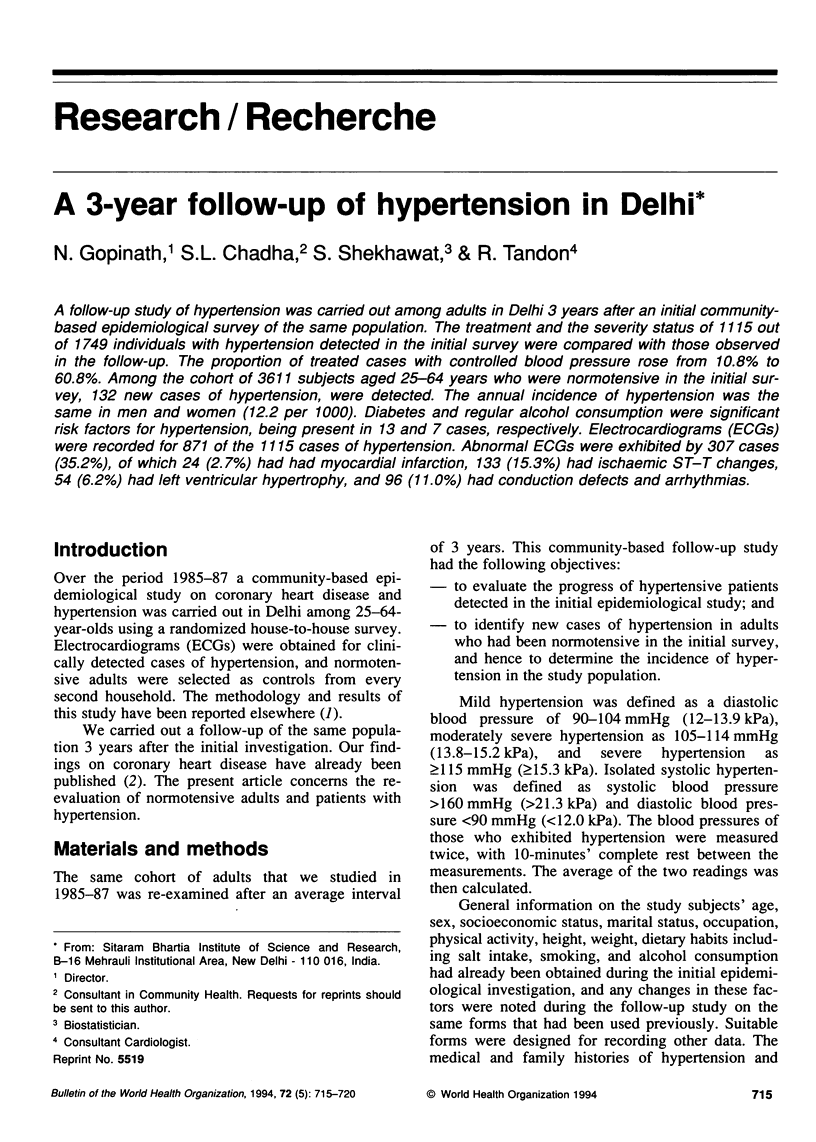
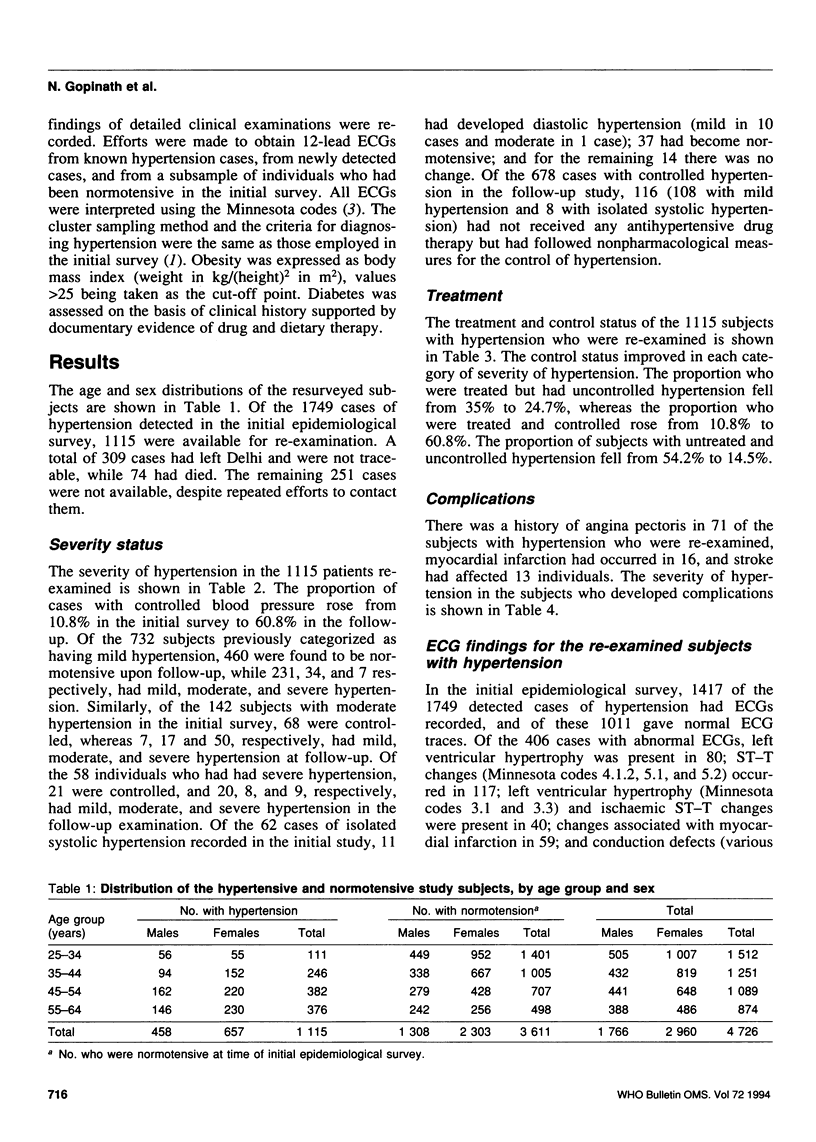
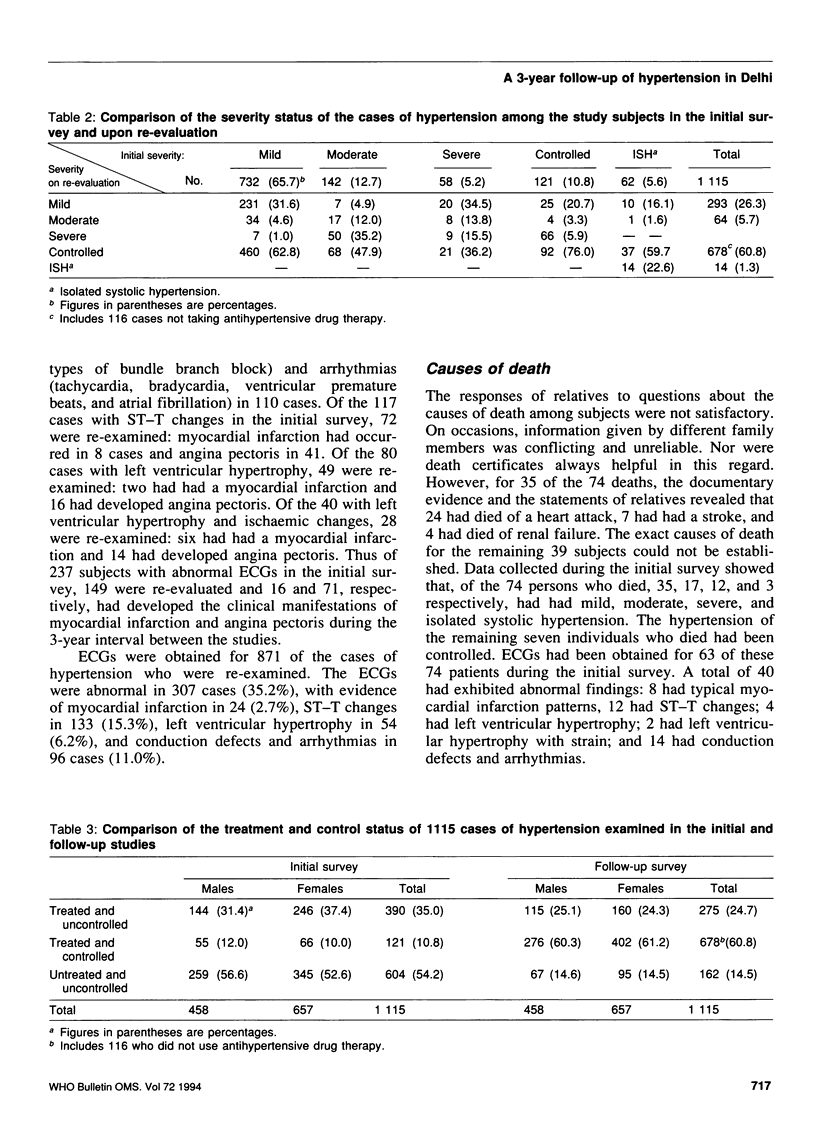

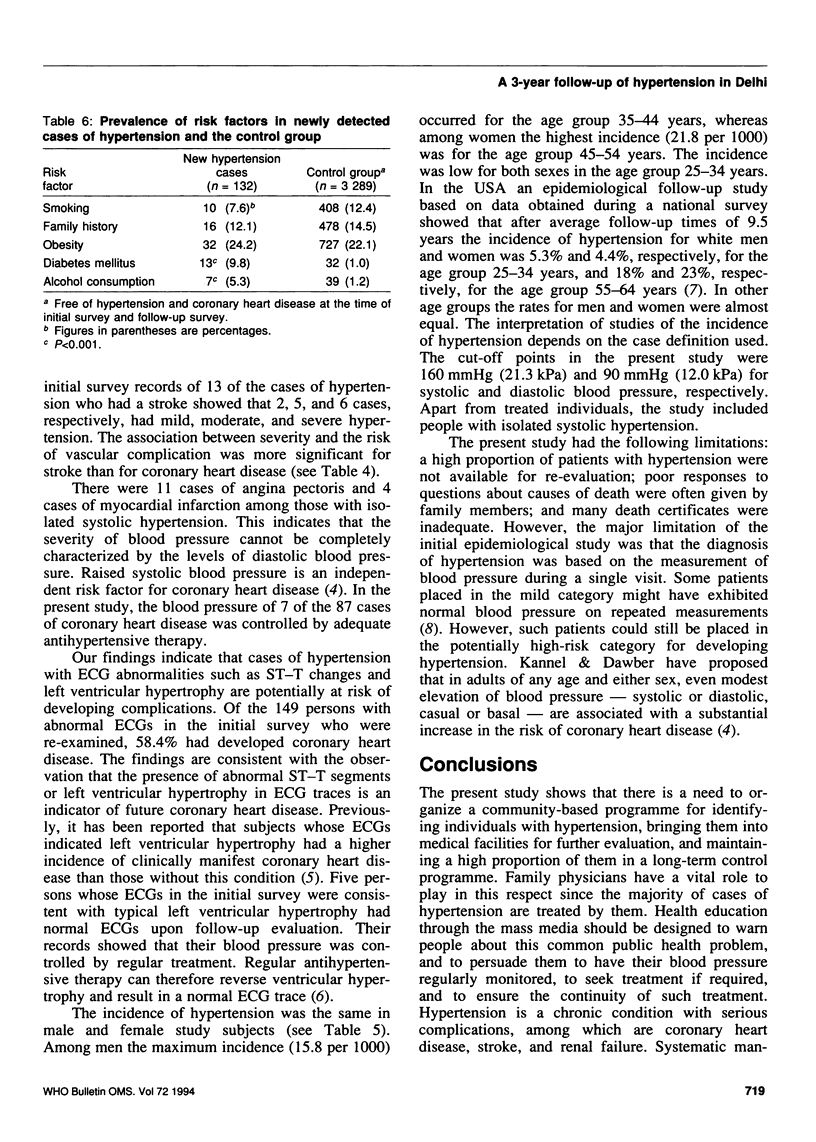
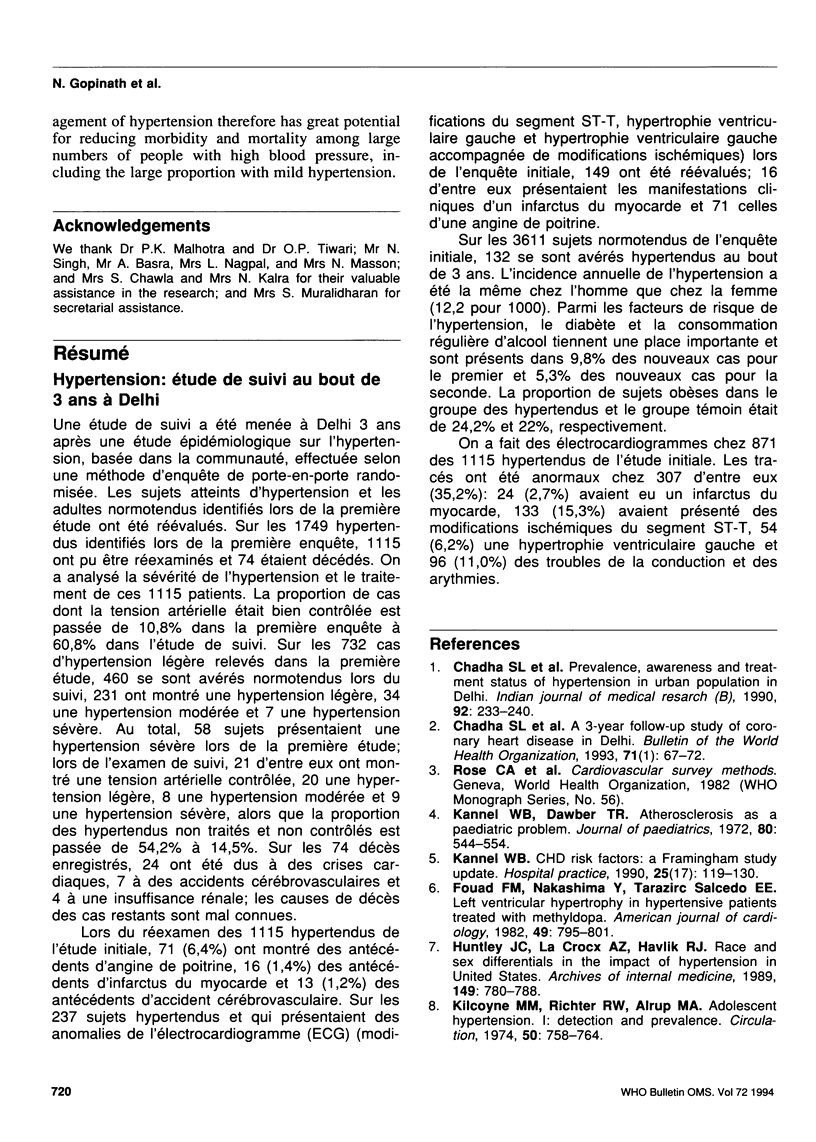
Selected References
These references are in PubMed. This may not be the complete list of references from this article.
- Chadha S. L., Radhakrishnan S., Ramachandran K., Kaul U., Gopinath N. Prevalence, awareness & treatment status of hypertension in urban population of Delhi. Indian J Med Res. 1990 Aug;92:233–240. [PubMed] [Google Scholar]
- Chadha S. L., Ramachandran K., Shekhawat S., Tandon R., Gopinath N. A 3-year follow-up study of coronary heart disease in Delhi. Bull World Health Organ. 1993;71(1):67–72. [PMC free article] [PubMed] [Google Scholar]
- Cornoni-Huntley J., LaCroix A. Z., Havlik R. J. Race and sex differentials in the impact of hypertension in the United States. The National Health and Nutrition Examination Survey I Epidemiologic Follow-up Study. Arch Intern Med. 1989 Apr;149(4):780–788. [PubMed] [Google Scholar]
- Fouad F. M., Nakashima Y., Tarazi R. C., Salcedo E. E. Reversal of left ventricular hypertrophy in hypertensive patients treated with methyldopa. Lack of association with blood pressure control. Am J Cardiol. 1982 Mar;49(4):795–801. doi: 10.1016/0002-9149(82)91961-0. [DOI] [PubMed] [Google Scholar]
- Kannel W. B. CHD risk factors: a Framingham study update. Hosp Pract (Off Ed) 1990 Jul 15;25(7):119-27, 130. doi: 10.1080/21548331.1990.11703974. [DOI] [PubMed] [Google Scholar]
- Kannel W. B., Dawber T. R. Atherosclerosis as a pediatric problem. J Pediatr. 1972 Apr;80(4):544–554. doi: 10.1016/s0022-3476(72)80049-0. [DOI] [PubMed] [Google Scholar]
- Kilcoyne M. M., Richter R. W., Alsup P. A. Adolescent hypertension. I. Detection and prevalence. Circulation. 1974 Oct;50(4):758–764. doi: 10.1161/01.cir.50.4.758. [DOI] [PubMed] [Google Scholar]


